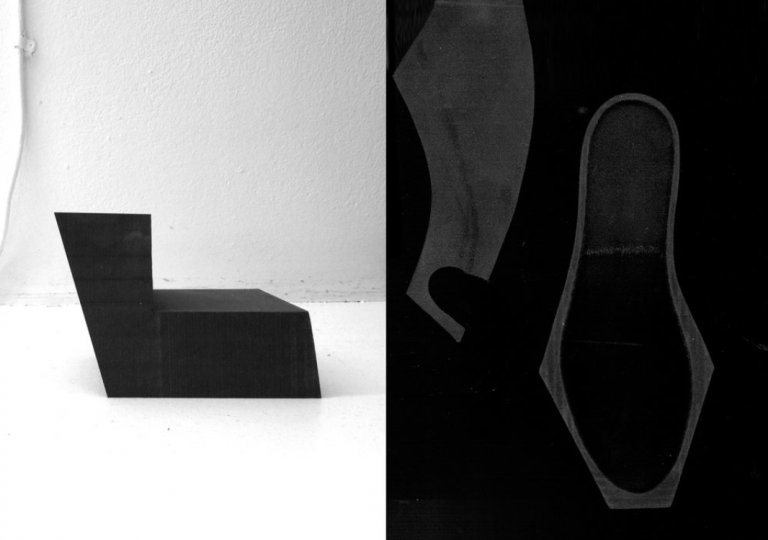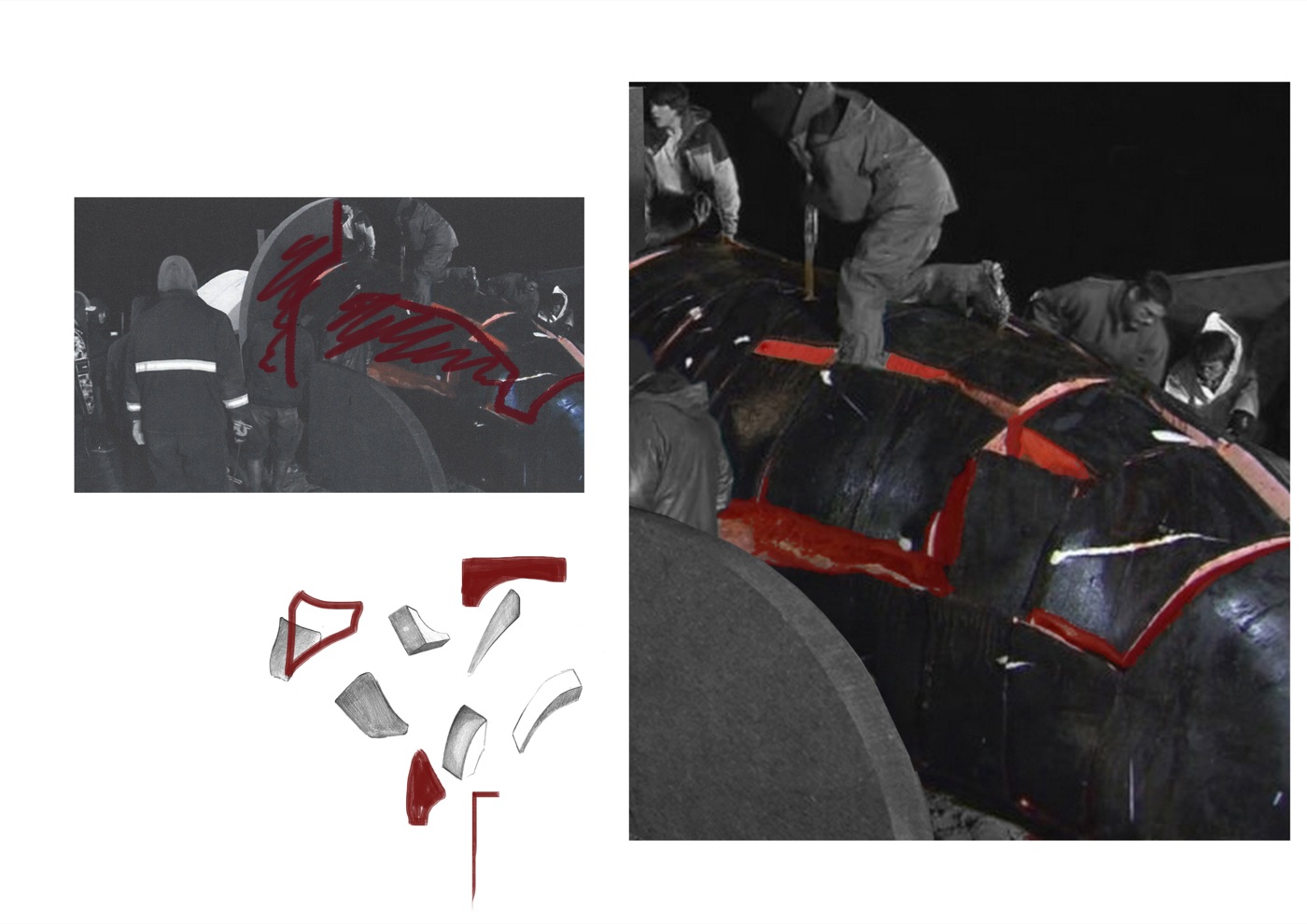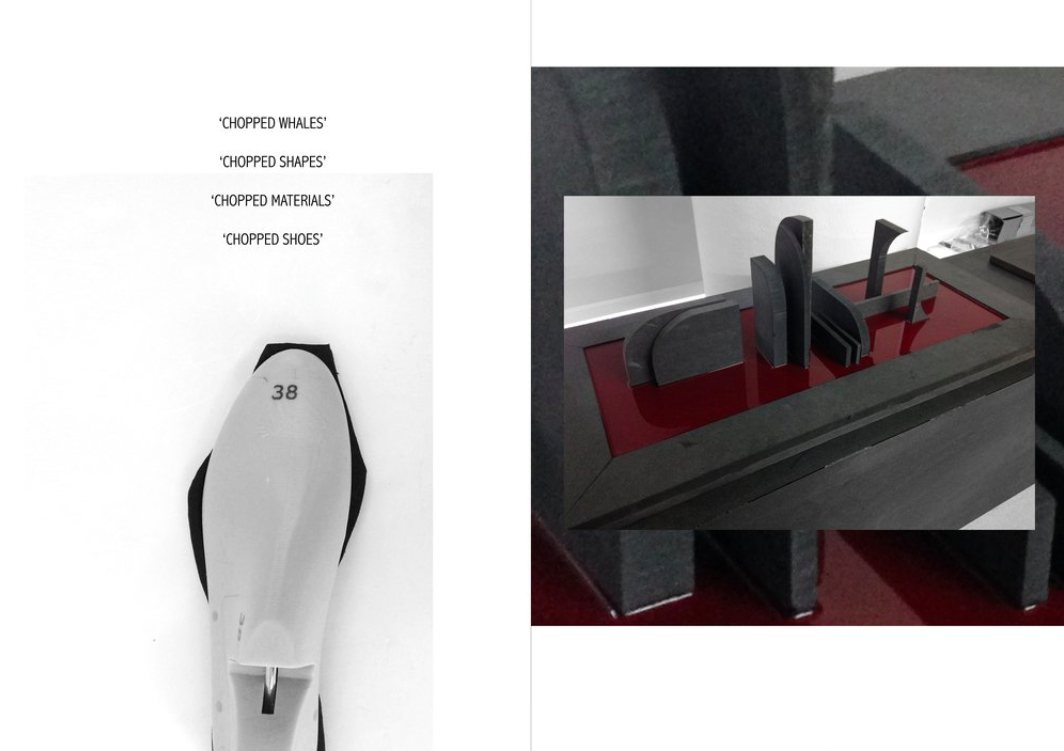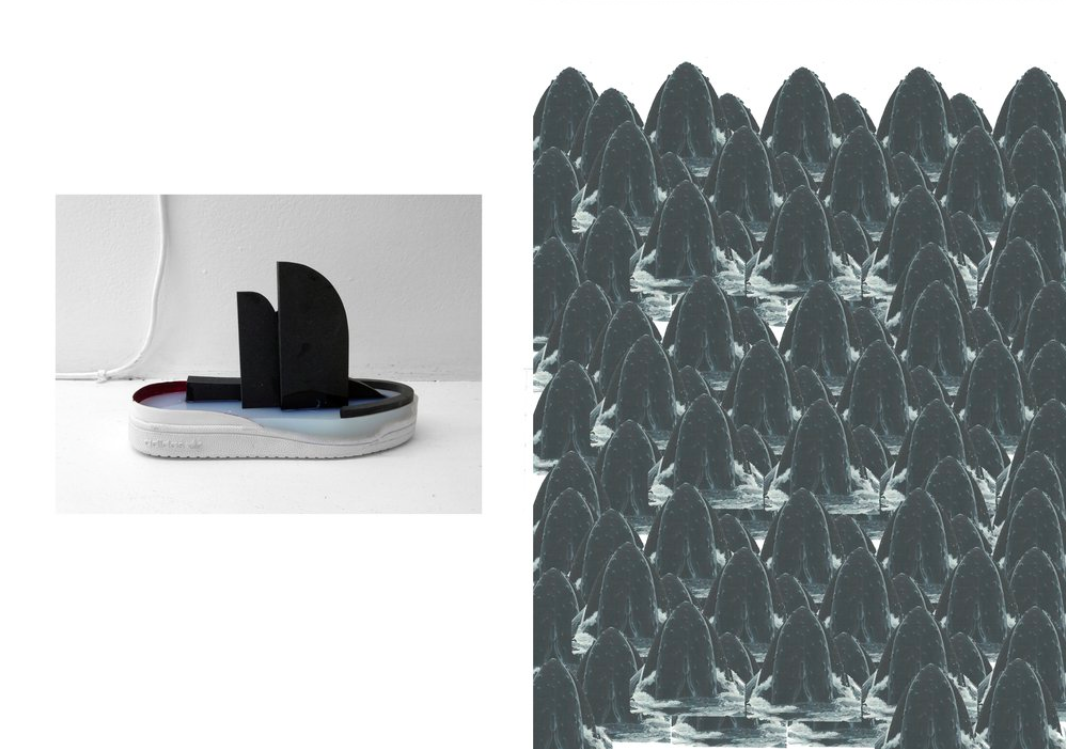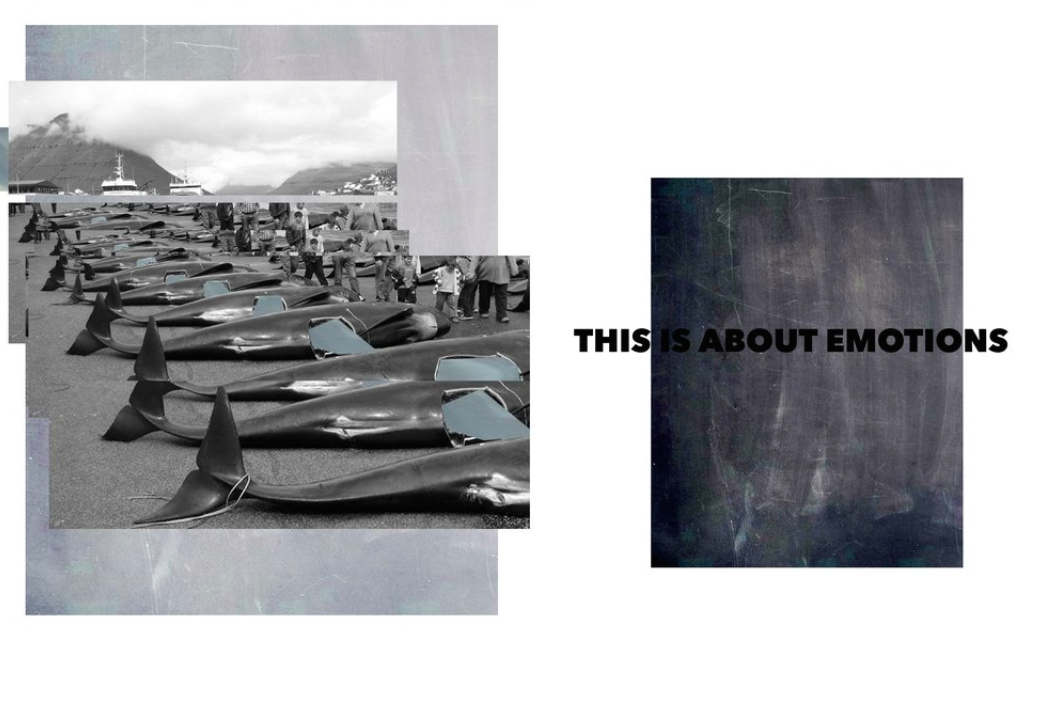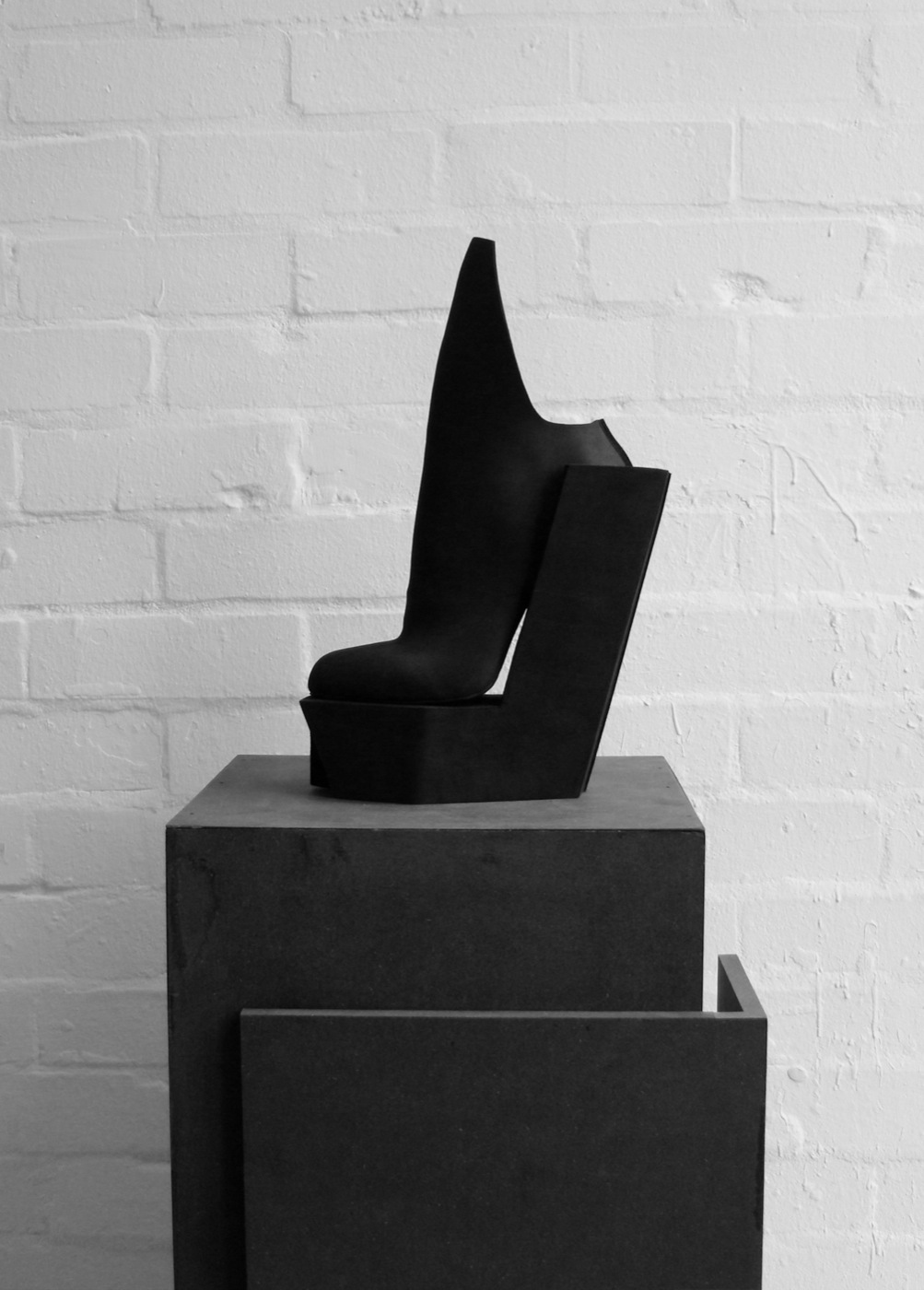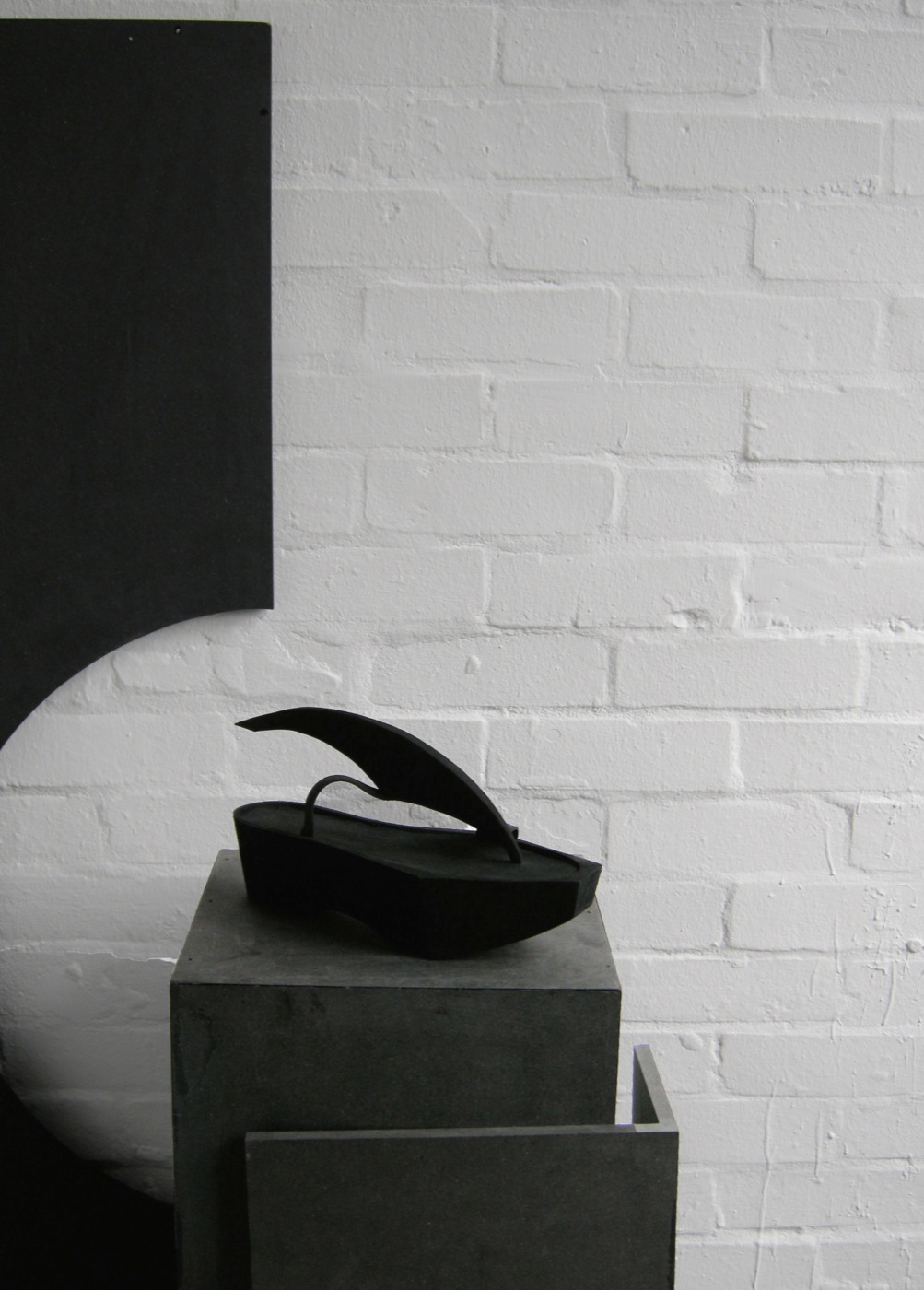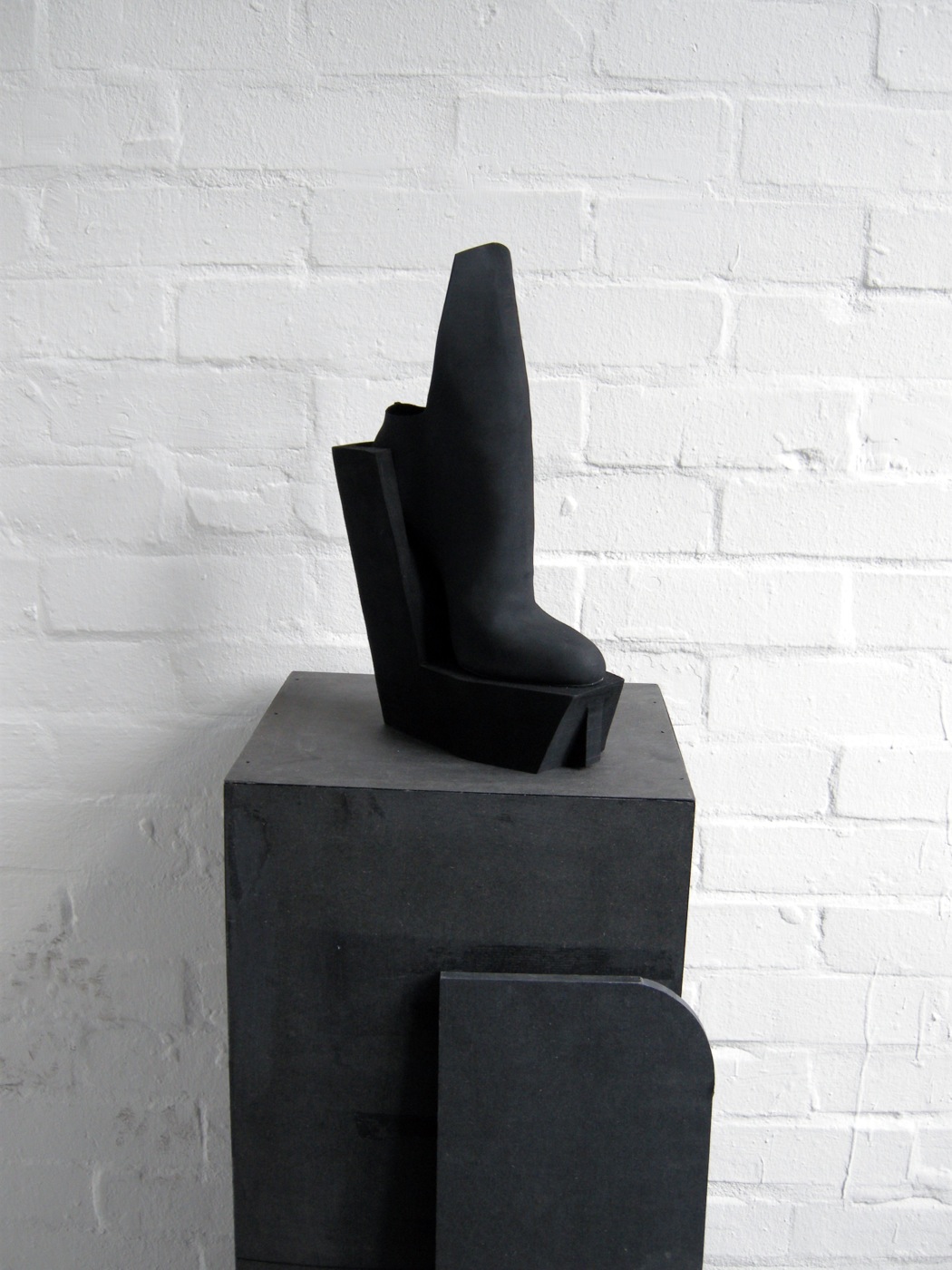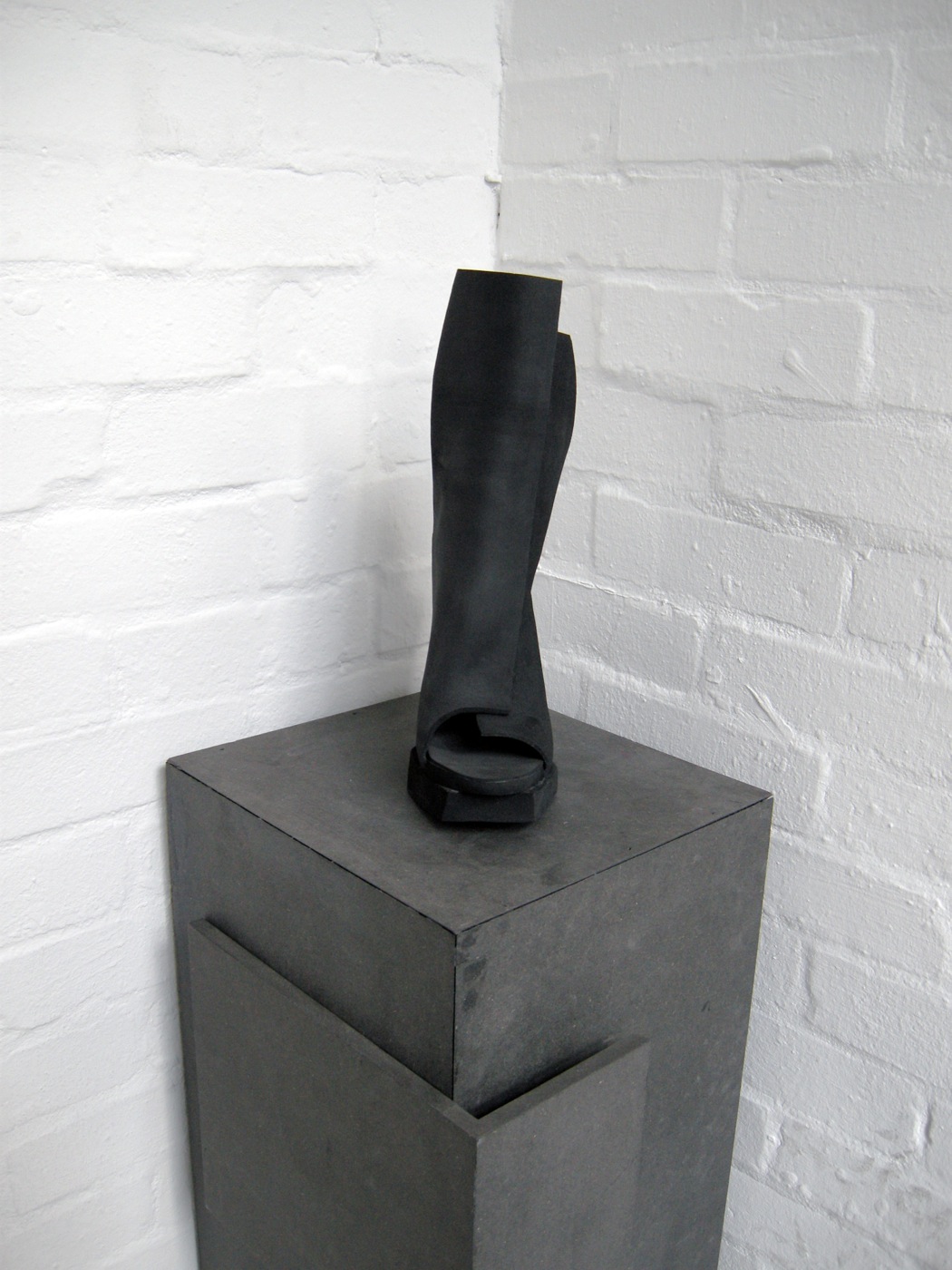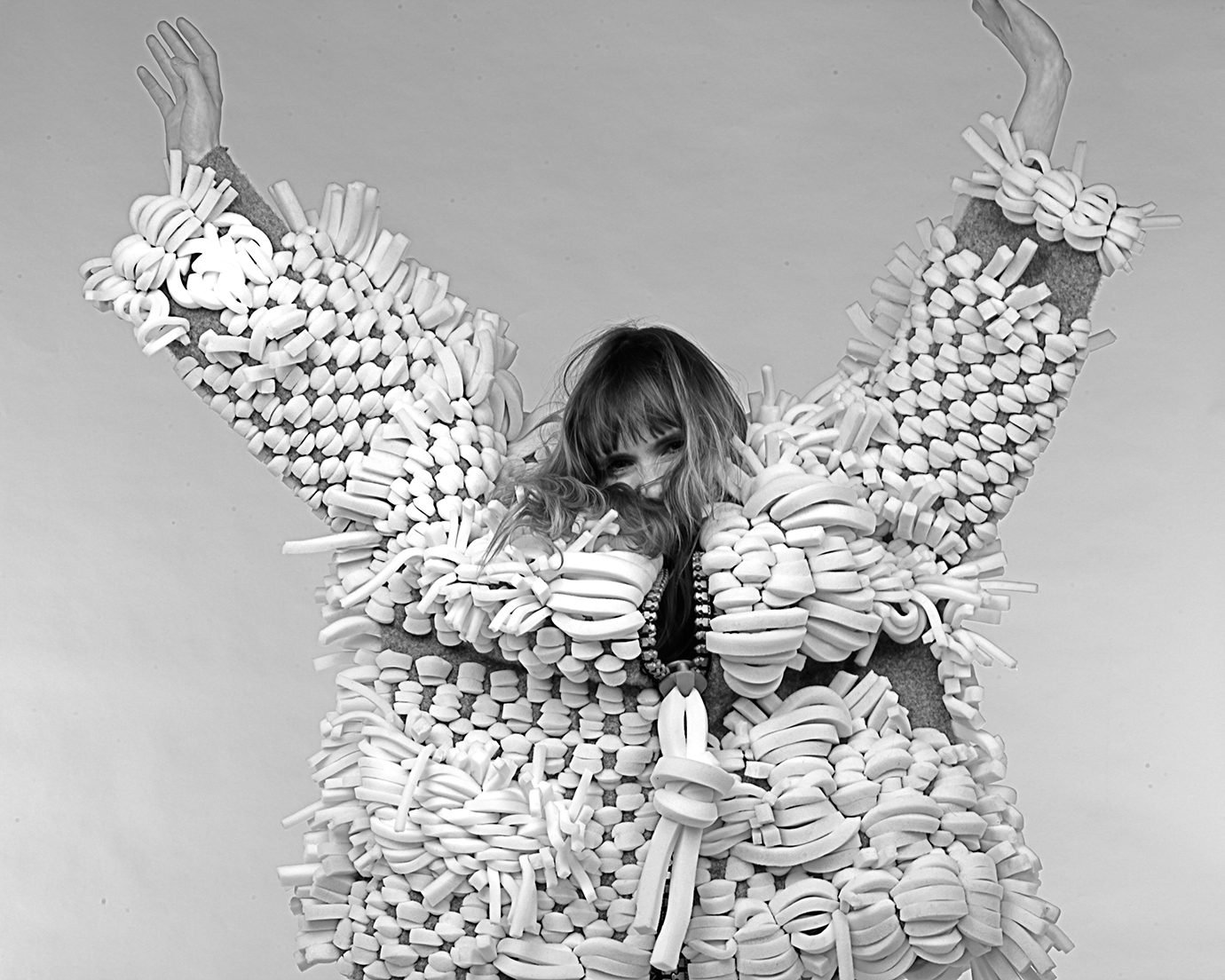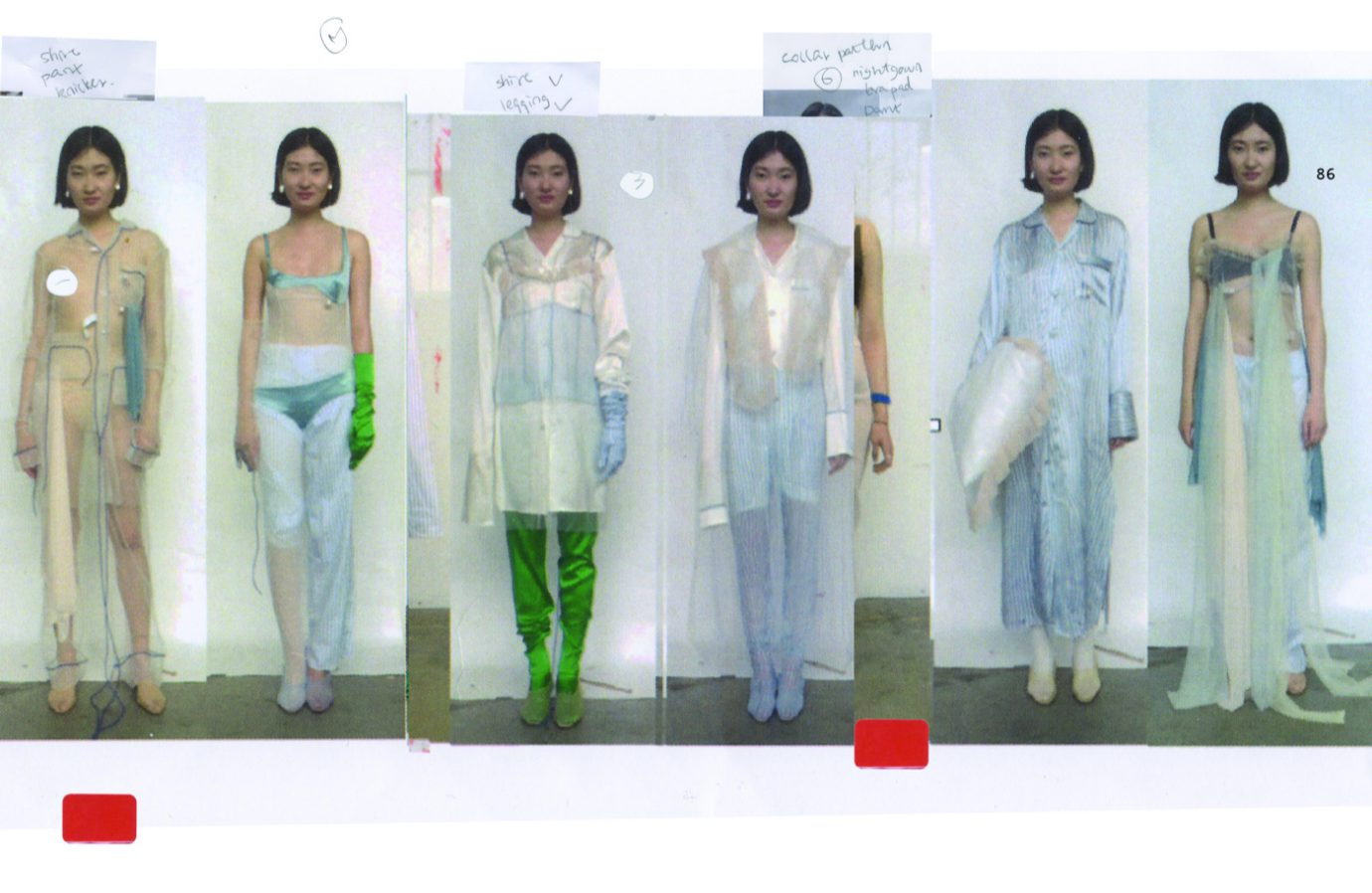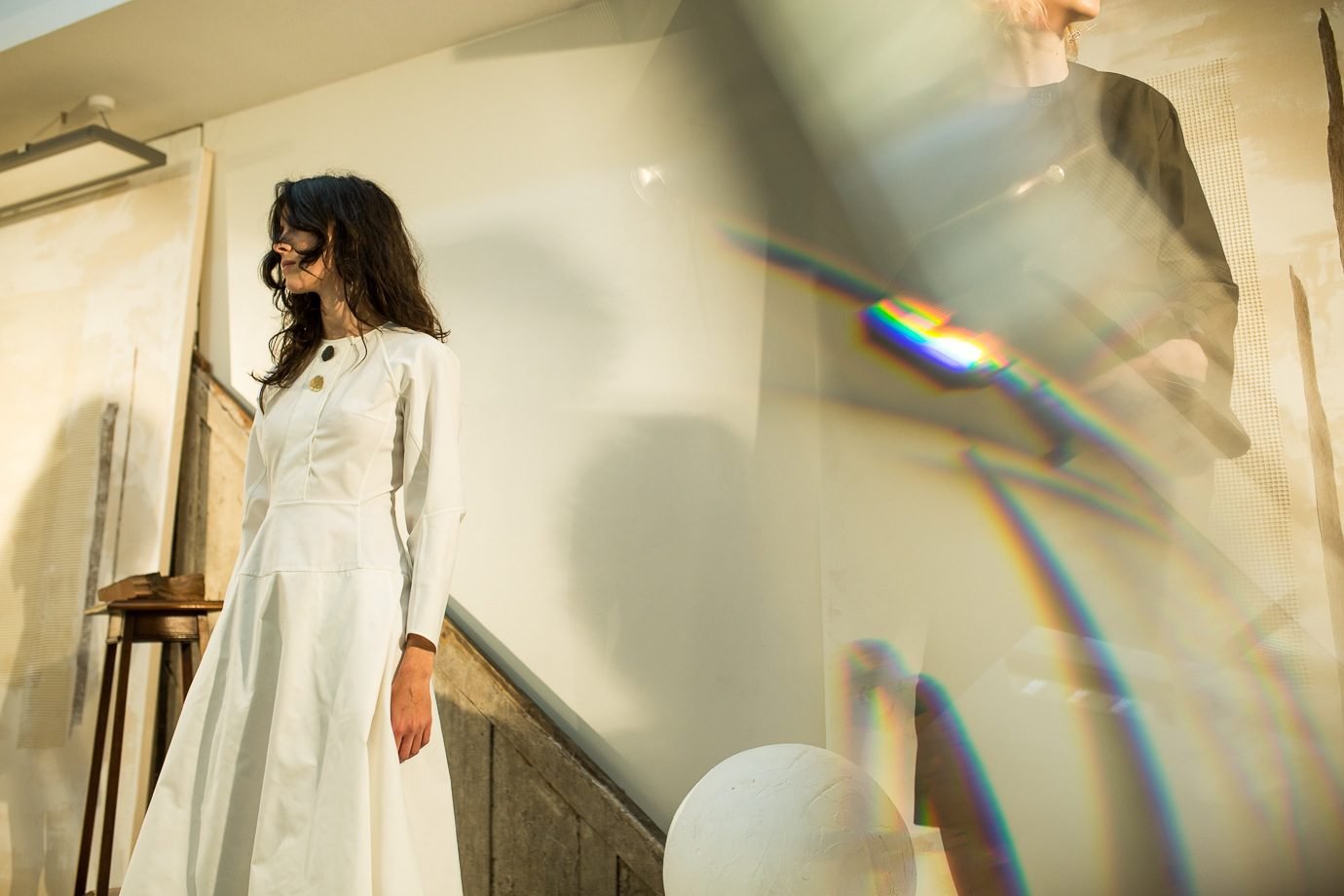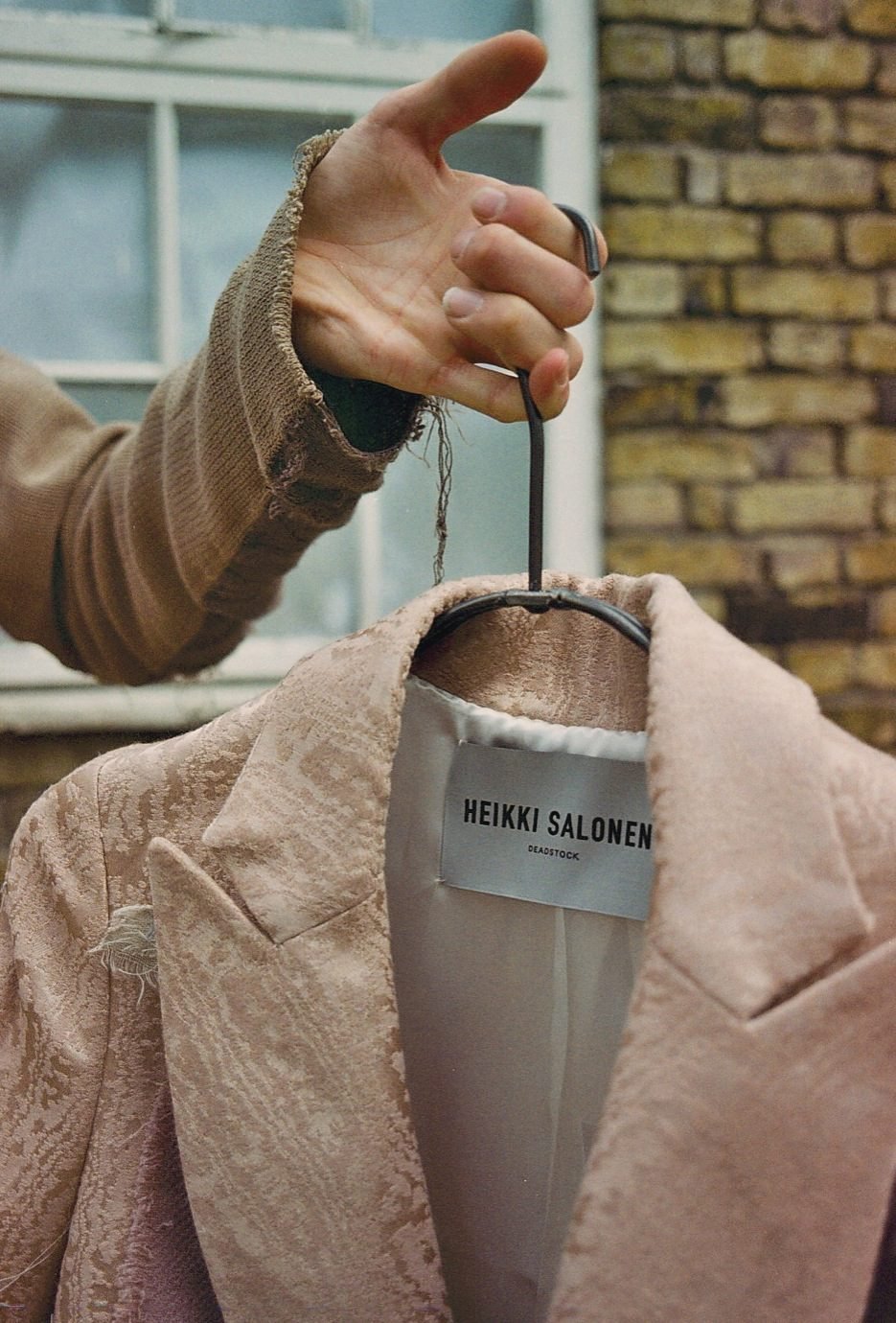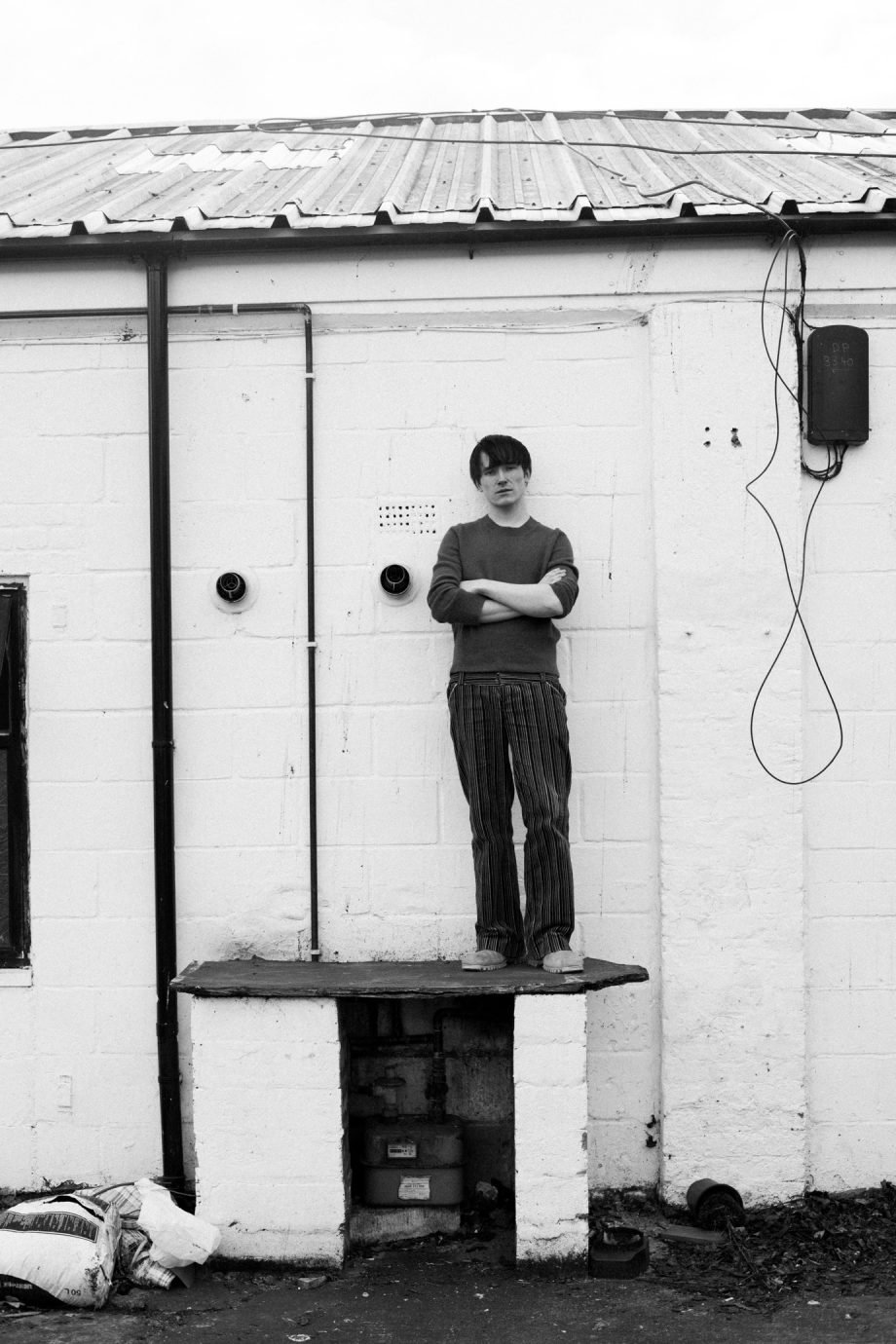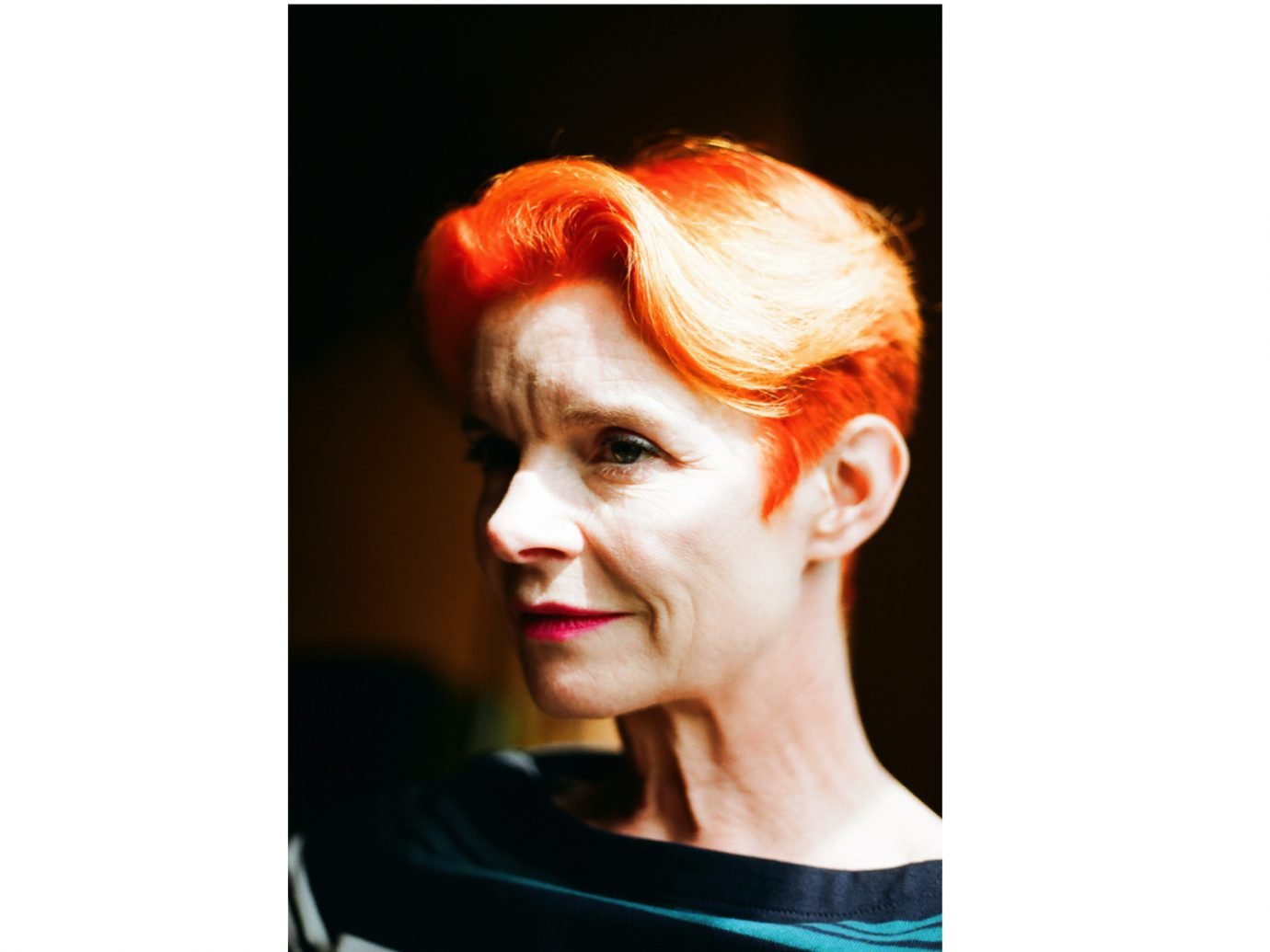What was the starting point of your collection?
My final collection drew on a personal experience: four years ago, I touched a whale’s skin for the first time. I was surprised by its lustre, caught between its beauty and the moral dilemma of such a product. I posed a set of conceptual questions to commence the project:
How greatly are we living amongst the sacrifices of countless beings?
How informed are we about what’s behind products we deem beautiful?
How, as individuals, do we feel about this?
How did you begin your making process?
Usually in the initial stage of my process, before I start designing, I first create sculptures or small pieces that relate to my concept. Working in this way can help me to break the limits around any idea I have far more easily than if I were to design in the ‘usual’ way. Creating a sculpture can be an individual work in itself, so there’s far more chance to develop ideas.
To me, shoes are more like sculptures, not just ‘fashion’ items. As a form, shoes satisfy both my interest in fashion and art, and I understand my work to fit into both categories. When you design something, it starts as one thing, but as it develops, it hangs between art and design with no clear borderline.
How was your experience of studying at the RCA?
Both the curriculum and vision at the RCA are very different compared to my BA in Korea. The tutors and technicians always encouraged me to think and act freely in my work. There were no limits and I could pursue virtually any idea that came to mind.
Because of my concept, I couldn’t use any animal products. Therefore I had to find new materials for the body, the sole, and even the smaller parts that make up the inside of the shoe. During my process, I had to use a CNC machine to create my material, ‘micro-rubber’, in a usable form. I had a lot of difficulty with handling this material, because it was something new, and I had never tried these processes before.

